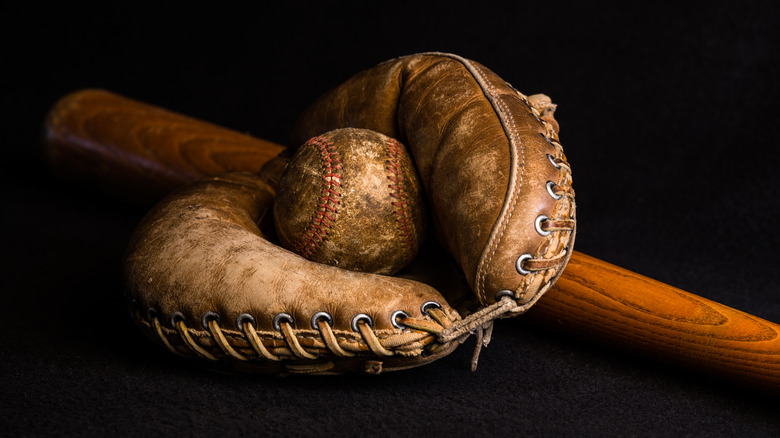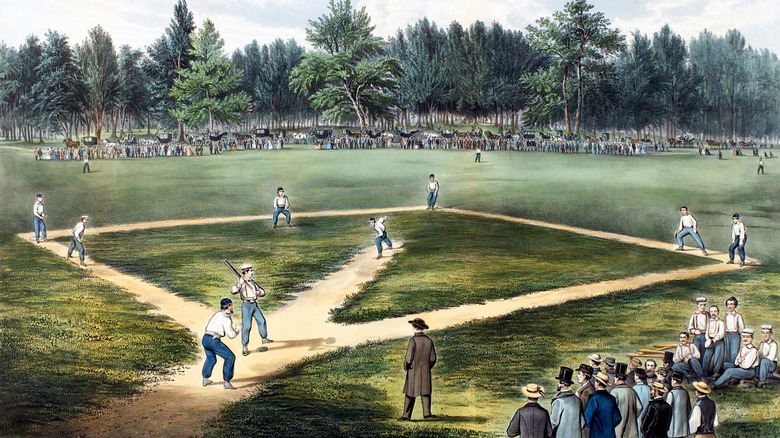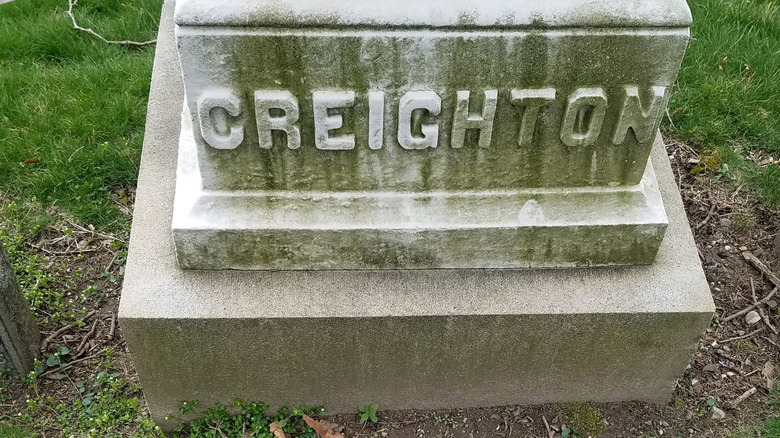The Myth Surrounding The 1862 Death Of Baseball's First Superstar, Jim Creighton
Though baseball is largely considered one of the staples of American culture, along with apple pie, the sport actually has a shorter history than many aficionados may realize. Though iterations of baseball had been around since the nation's founding, it wasn't until the 1850's that the game truly developed and gained popularity (via The National Museum of American History).
The game had not been around long when a young Brooklyn teenager emerged on the scene and changed how the sport was played forever: Jim Creigton. By the time Creighton was a teen, he was playing in junior leagues. At 16 years old, he joined one of Brooklyn's professional teams, the Niagaras, before eventually moving to the Excelsiors, per The Society for American Baseball Research.
Creigton's first year with the Excelsiors was incredible. Throughout his 20 games with the team, he scored 47 runs and boasted not a single strikeout. His defense was as good as his offense, and he not only recorded baseball's first triple play, but also its first shutout.
Part of Creigton's magic was his unusual pitching style. At the time, pitches was delivered in an underhand style with no wrist snap. As a result, the ball was not very fast; in fact, there wasn't even a need for a strike box. However, Creighton was able to figure out a way to throw with incredible speed without breaking any rules — a low and swift delivery. This meant that, for the first time, pitching was seen as a weapon in the game.
A fatal injury from a powerful swing
Creighton wasn't just popular because of his skill. People loved his personality, too. He reportedly never spoke ill of opponents and had a "gentlemanly nature," which helped distinguish baseball as a higher-class sport versus the street games played in poorer areas.
Creighton's career seemed destined for greatness, as he was loved for his person and was an amazing talent. But within the first two years of playing with the Excelsiors, he suffered a fatal injury.
"I was present at the game . . . at which Jim Creighton injured himself," teammate John Chapman wrote of the incident (per Our Game). "He did it in hitting out a home run. When he had crossed the [plate] he turned to George Flanley and said, 'I must have snapped my belt.'" But Creighton hadn't snapped his belt.
Over the past century, medical experts have looked into Creighton's injury and generally believe that he likely suffered from a ruptured inguinal hernia. According to Johns Hopkins Medicine, an inguinal hernia is when a segment of the intestine pushes through the layered abdominal muscles and bulges directly under the skin. A rupture of the hernia is both incredibly rare and incredibly dangerous, and the surgery required for any chance of survival was not performed until 1920.
Sadly, Creighton was hemorrhaging in agony for four days before finally dying on October 18. He was only 21 years old at the time of his death.
But was it myth or was it true?
It turns out that the story of Creighton's powerful home-run swing is actually pretty close to the truth — with one major difference. According to a speech given by the Excelsior president, Dr. Jones, a few months after Creighton's death, the baseball superstar did suffer from a hernia following a swing, but it was not a home run. In fact, it wasn't even from baseball. Rather, it was during a game of cricket.
Though historians aren't exactly sure why the details surrounding Creighton's final game were misreported, there is one major hypothesis. At the time, baseball was still an up-and-coming sport and not as popular as cricket, its British counterpart. However, Creighton and his accomplishments had spurred a baseball "mania," and according to John Thorn, the Official Historian of Major League Baseball, the Excelsiors were undoubtedly worried that the death of their big superstar would herald the end of the sport's growth. Because of this, it's been speculated that team was motivated to use Creighton's death as a way to "propagandize" baseball by creating a martyr known for his talent, professionalism, and a love of the game (per The Society for American Baseball Research).


